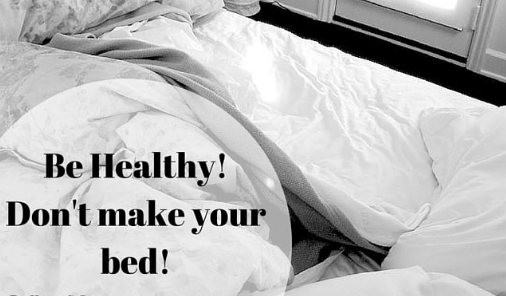Welcome back! Last week, we talked about Santa and discussed if it’s ok to tell your kids if Santa is “real”. If you missed that blog and would like to catch up, click HERE.
Dust Mites. They are a part of life. They are literally everywhere. Some people are so allergic to them that they trigger asthma attacks.

You might be dismayed to know that as we speak, there are approximately 1.5 million of those little guys living in your bed. They are eating the skin cells you left behind this morning when you got up to go to work.
Did you make your bed? Oh good. They love that. Dust Mites thrive in the humid, warm conditions of a freshly made bed. All that warmth that you left behind won’t be wasted. As the heating blanket cools off, and the heat of your body dies down, they are shaking hands and kissing babies under the covers, multiplying, pooping, and waiting for your return. You should probably put some Kleenex on the nightstand for all those sneezes, coughing, and itchy eyes that they will assure are in your future.

Researcher Dr. Stephen Pretlove states, “We know that mites can only survive by taking in water from the atmosphere using small glands on the outside of their body. Something as simple as leaving a bed unmade during the day can remove moisture from the sheets and mattress so the mites will dehydrate and eventually die.”
Wait. What? Did I just hear “don’t make your bed, Linda“? I think that’s exactly what I heard!
Now, I know some of you may be thinking, “this is old news. Some of this dates back to 2005” and you would be correct, however, there have been some new studies on this very topic published as recently as May of 2019.
A study in 2019 by Nathalie Acevedo, Josefina Zakzuk, and Luis Caraballo states that: “when humidity levels are less than 55%, dust mites will gradually dehydrate and die. This is the case for many homes where the winter is cold and dry, causing a low RH (room humidity) in the heated indoor air. Some studies in temperate areas suggest that maintaining an indoor RH of less than 51% during the humid summer season resulted in significant reductions in mite and allergen levels”.
Myron Zitt, M.D., past president of the American College of Allergy, Asthma and Immunology disagrees with the assumption that not making your bed will kill the mites. He states, “When making your bed, you do shake the mites and their fecal matter in the air,” Zitt says. “So if you were to do an air test immediately after making the bed, it would show higher levels of dust mites until they settle.”

He goes on to say, “not making the bed doesn’t do anything to eliminate the existing mite population. The average person can have up to 1.5 million dust mites in his or her bed, and they can actually produce two times their weight in fecal matter. Getting the humidity down in your house may help. If you can get your humidity down below 50 percent — ideally between 35 to 40 percent — that is going to destroy the mite populations.“
So realistically, what can we do? Here are some recommendations:
“Use a hygrometer (A hygrometer is an instrument used to measure the amount of humidity and water vapor in the atmosphere, in soil, or in confined spaces) to measure the humidity in your house, and then use a dehumidifier when it gets too high“, Zitt recommends. Here are other ways to address dust mites.
- Cover your mattress and pillows with zippered, dust-proof allergen covers. Plastic or vinyl ones work well and are inexpensive, although some people prefer the fabric kind, Zitt notes. Just make sure the covers are allergen-impermeable.
- Wash fabric covers, sheets, pillowcases, and blankets once a week in hot water, or follow the instructions provided on the manufacturer’s label.
- Vacuuming your mattress is not effective for killing mites, but it will remove some of the fecal matter. Zitt recommends vacuums with a high-efficiency air filter and bags that offer microfiltration.
- Keep pets out of the bedroom.
- Avoid thick carpeting when possible. “You are better off with wood or hard floors with a throw rug that you can wash regularly,” Zitt says.
- Get filters for your furnace and air conditioner with a minimum efficiency reporting value rating of 11 or 12.
- People who suffer from allergies should wear an N95 filter mask while cleaning to avoid having a reaction.
“Up to 50 percent of people are allergic to dust mites, and while avoidance is the best remedy, those who are still suffering should see a board-certified allergist, Zitt says. Immunotherapy or allergy shots are available“.
Well, dear readers, I tried. For those of us who detest making the bed, only to get back into it in a few hours and mess it up again, I suggest you take what you wish from this blog, and leave the rest behind.
Three things you may not want to know about Dust Mites, also known as House Dust Mites (HDM) This video is informative and runs approximately 4 minutes.
If you found this blog to be informative or just a relaxing way to waste time, please do me a favor and share it on your Facebook page? To share, just click on the Facebook icon located right below this paragraph. Much appreciated!

1 Comment